
Sign up for daily news updates from CleanTechnica on email. Or follow us on Google News!
In preparation for the Salt Lake City Winter Olympics in 2002, the Utah Transit Authority (UTA) planned and executed significant upgrades to the Salt Lake County and eventually Wasatch Front transit systems. The first element in the upgrade was the implementation of TRAX, the first Salt Lake City light rail streetcar system since its streetcars were abandoned in 1945, just after World War II.

The first TRAX line would run from Draper north to downtown Salt Lake City, which opened in 1999. A line east from downtown Salt Lake to Rice Eccles Stadium on the University of Utah Campus was operational just in time for the opening and closing ceremonies of the 2002 Winter Olympics. TRAX was envisioned for eventual expansion to service a large part of Salt Lake County, including a line extending west to Salt Lake City International Airport which opened in 2011.
The second element in the upgrade was for the Front Runner, a heavy commuter line, running on the Union Pacific Road Bed. It would run 80 miles south to north along the Wasatch front connecting Utah County (Provo South End Station) with Salt Lake County (downtown Salt Lake City) to Weber County (Ogden North End Station). There would be 16 stops along the route. The Front Runner began service in 2008. TRAX would be a traditional streetcar system, but with significant portions separated from city streets as is done routinely in European cities.
The Front Runner heavy rail system was to be diesel-powered to save money and keep from interfering with Union Pacific freight traffic. It is unlike major commuter lines in Chicago, New York, other eastern cities, and Europe, which are electric-powered using overhead catenary systems as is done with TRAX.
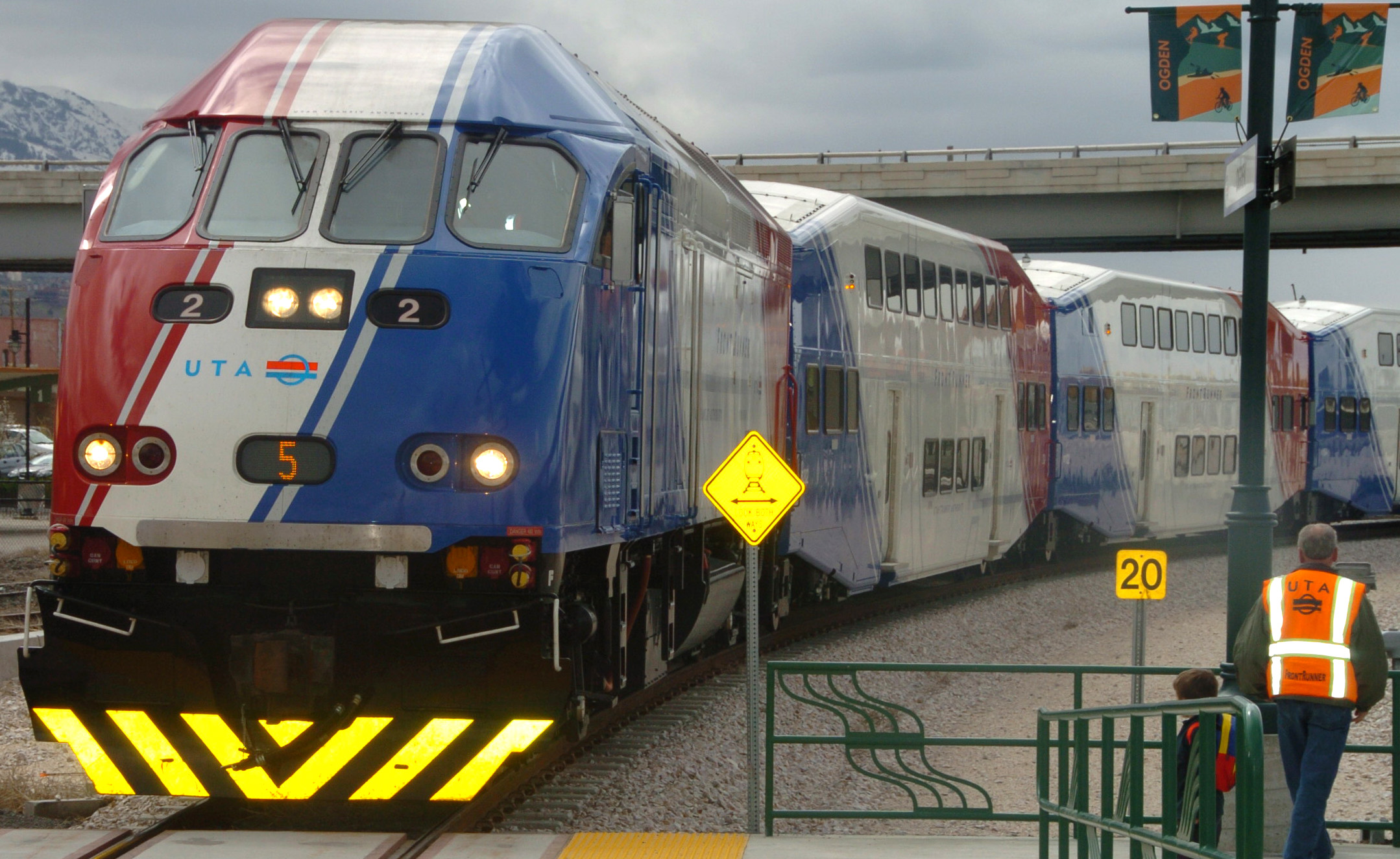
UTA efforts to reduce pollution: The Wasatch Front is a prime location for air pollution because of frequent high-pressure subsidence that gives us exceptionally poisonous air on certain winter days. The third element of UTA transit, electric buses, would be to further reduce pollution.
UTA Electric Buses
A primary focus of UTA to reduce pollution is to convert the UTA bus fleet to electric buses. The first delivery of UTA electric buses was in 2020. Now in 2024, there are 34 all-electric buses which are part of the 406 full-size bus fleet that UTA operates in Utah.
Not only do the buses have zero tail pipe emissions (no tailpipes), but they are extremely efficient. The most efficient diesel engines turn only ~30% of diesel fuel energy into propulsion. On the other hand, electric motors are 90% efficient and are powered by batteries that have a charge/discharge cycle that is also 90% efficient. This makes electric buses 80% efficient turning electricity into propulsion. In addition, buses are constantly accelerating from one stop and deaccelerating to the next stop. UTA buses capture significant energy when deaccelerating by putting that energy back into the battery. This makes the buses extremely efficient turning electricity into propulsion.
The UTA has purchased New Flyer electric buses that can use an overhead pantograph system for fast charging, as shown below. The 60-foot articulated electric buses are identical to the 25 buses that went into service this year at Zion National Park. There are three fast chargers at Salt Lake Central Station and another at 3900 South Wasatch Boulevard. They are installed there so the electric buses can be charged while the drivers are on their required 20 minute break which they must take every ~2 hours.
The buses have a range of 150 miles and are able to run all day with the fast-charging stops. The chargers charge at a rate of up to 300 kWh, which is the maximum that Rocky Mountain Power can supply with the current wiring. The electric buses are also limited to this rate to avoid damaging the batteries. For comparison, Tesla Superchargers are limited to 250 kWh, where Tesla vehicles can only accept this rate when charging at a low state of charge. By the time a Tesla reaches 90% state of charge, the rate is reduced to 50 kWh to avoid damaging the battery. UTA is working together with Utah State University and Rocky Mountain Power on technology to reduce the impacts to the grid from electric buses.
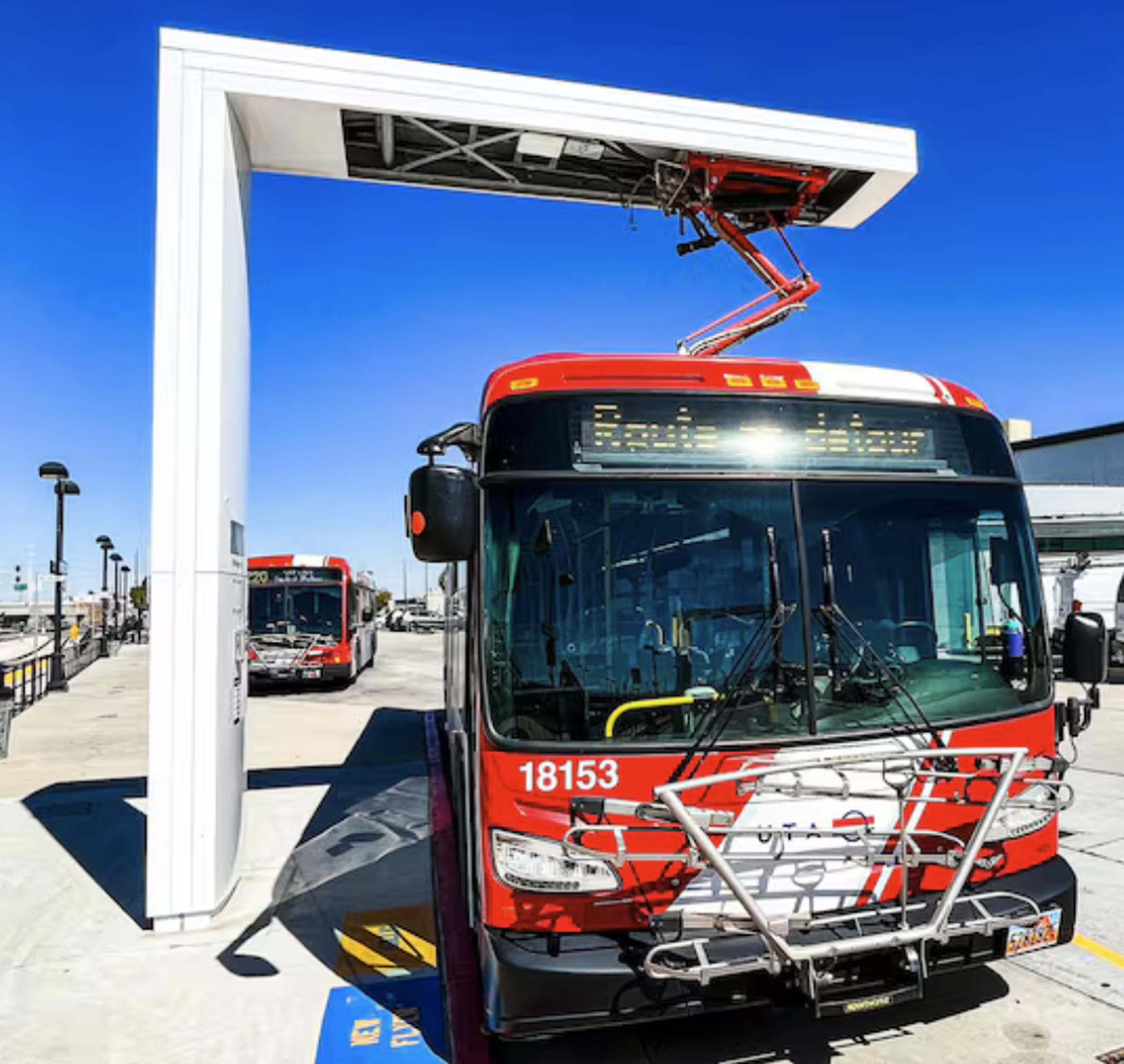

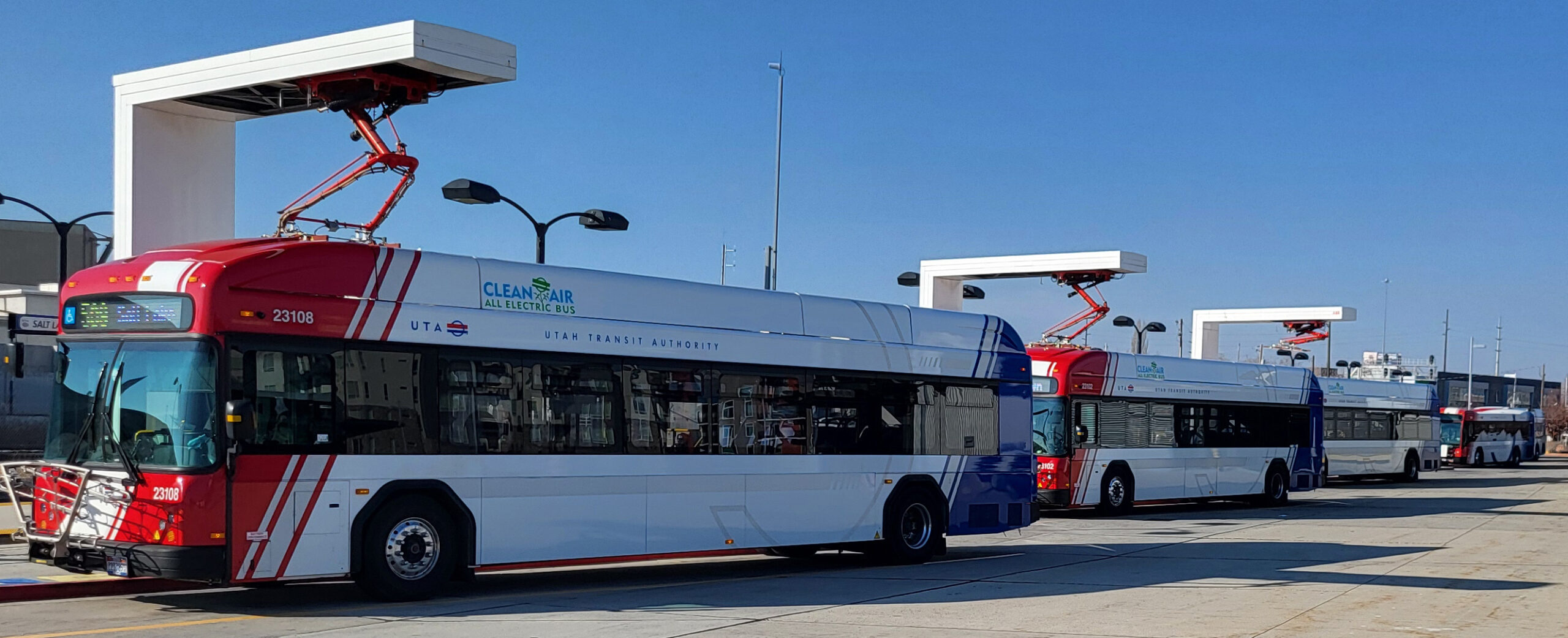
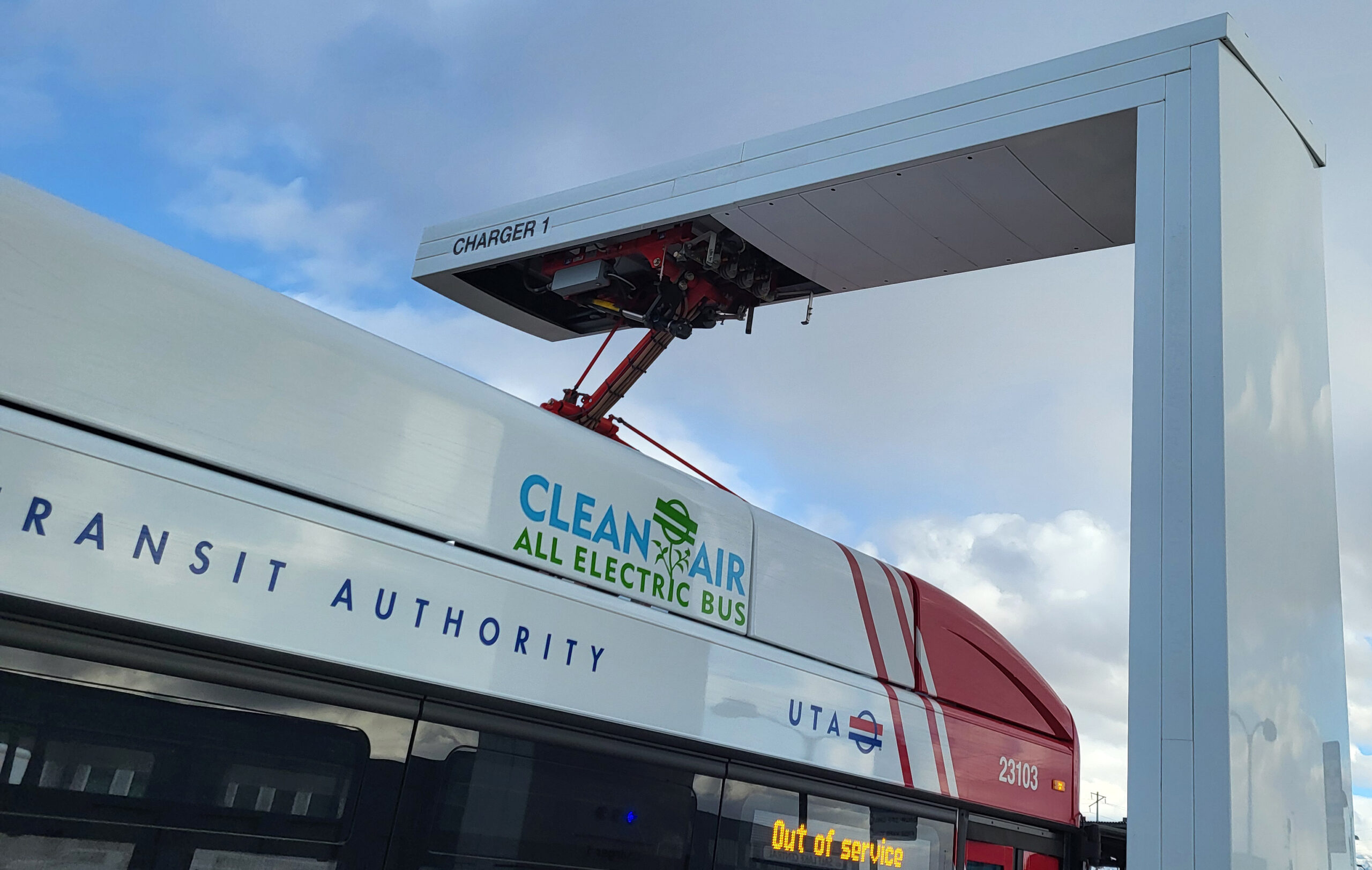
For those of you wondering what ChatGPT can do for you, the below image shows a generic UTA 60-foot articulated electric bus in operation in Salt Lake City with the Wasatch Front Mountains in the background. The following image shows an actual UTA 40-foot electric bus on a Salt Lake City street.

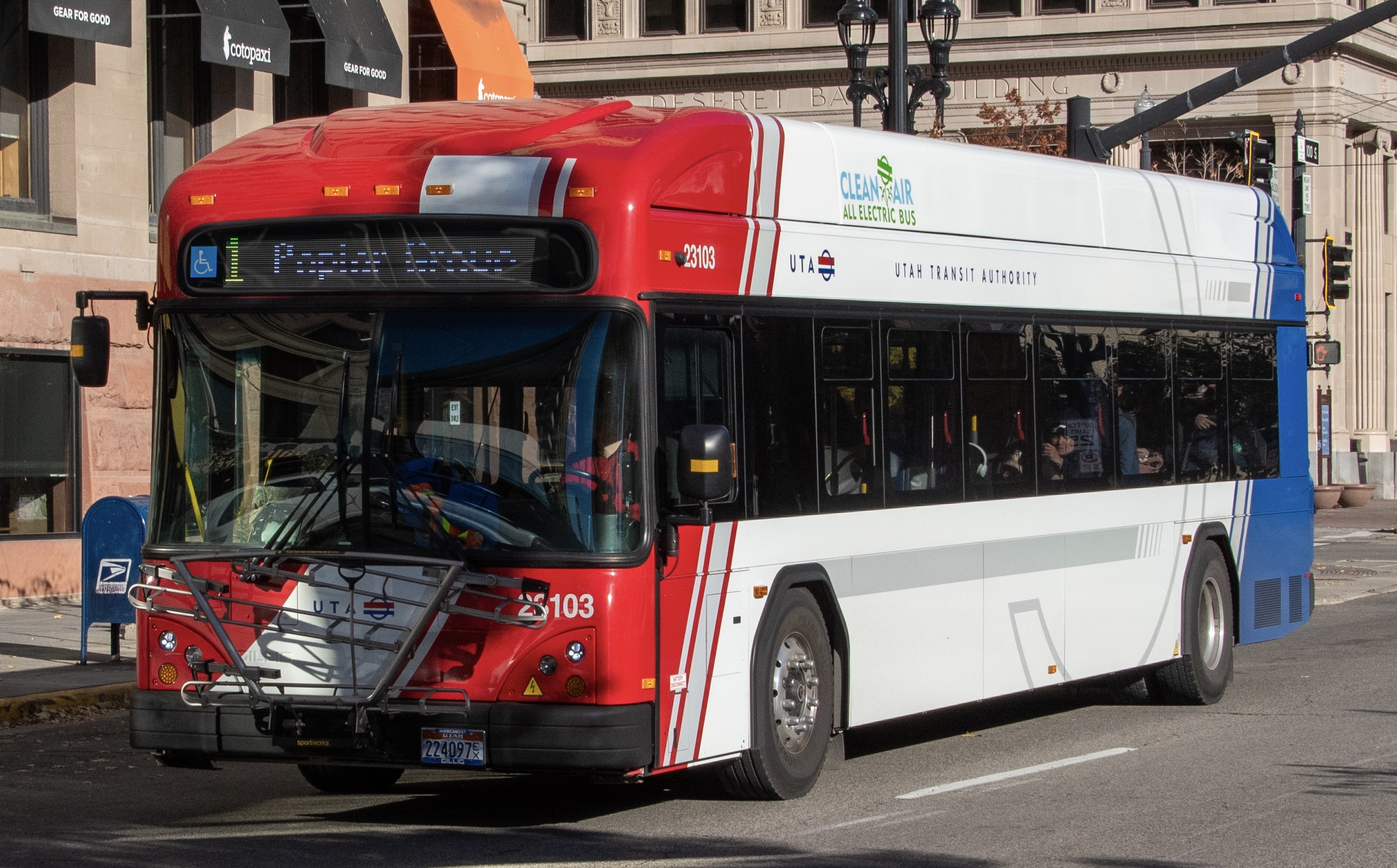
A second UTA focus to reduce pollution will be to convert the Front Runner from diesel to electric propulsion. Most US and all European and Chinese commuter rail systems use electric propulsion powered by overhead catenary wires. The Front Runner has a complication in that freight trains cross their tracks and certain cargos might damage a catenary system. For that reason, UTA is considering battery-powered trains. UTA is working together with Utah State University and Rocky Mountain Power on a plan for using battery-powered trains that would charge much like the buses while at stops or using short sections of catenary wires.
Shortening the Front Runner service interval: On a recent trip to Vienna, Austria, I was staying near the Stephan’s Dom (Cathedral) and the surrounding Stephan’s Platz (Square). In the middle of the Platz, I found an escalator that took me down to the underground transit on at least three different levels. I bought a ticket and stepped up to the subway tracks. A train was just leaving, but not to worry, the next train would arrive in 4 minutes. By contrast, the shortest Front Runner service interval is 30 minutes, with a 60-minute interval on weekends. This can make Front Runner service very inconvenient. If the connection with light rail (streetcar) isn’t perfect or you finish with your business, flight, or entertainment at the wrong time, you could be waiting up to an hour for transportation. Going to a more frequent Front Runner service is very difficult.
To save money, many miles of Front Runner rails are single track. UTA will have to build many miles of double track to shorten the service interval. UTA has the Front Runner Forward program to shorten the service interval and extend the line south to Payson and north to Brigham City and to convert to double track along the whole route. Since Salt Lake City has recently been awarded the 2034 Winter Olympic Games, UTA has another motivation to upgrade service over the next years. If Front Runner is ever to run at 4-minute intervals like is done in Vienna, the whole 80 miles of Front Runner track would have to be built out to double track.
Note: UTA management supplied a number of images and consultation for this article.
Referral Program: Tesla has reactivated its referral program. If you find any of my articles helpful to you, please use my referral link: https://ts.la/arthur73734 (Be sure to use it when you make your order). If you are buying a new Tesla and use my link, you’ll receive $1000 off your purchase price for Model S and X, you will get $500 off for Model 3 and Y). You will also get 3 months of Full Self-Driving. It is technically FSD Beta and it will drive you automatically to any address you enter into the Navigation. (Just be prepared to intervene immediately if it screws up)

Chip in a few dollars a month to help support independent cleantech coverage that helps to accelerate the cleantech revolution!
Have a tip for CleanTechnica? Want to advertise? Want to suggest a guest for our CleanTech Talk podcast? Contact us here.
Sign up for our daily newsletter for 15 new cleantech stories a day. Or sign up for our weekly one if daily is too frequent.
CleanTechnica uses affiliate links. See our policy here.
CleanTechnica’s Comment Policy




